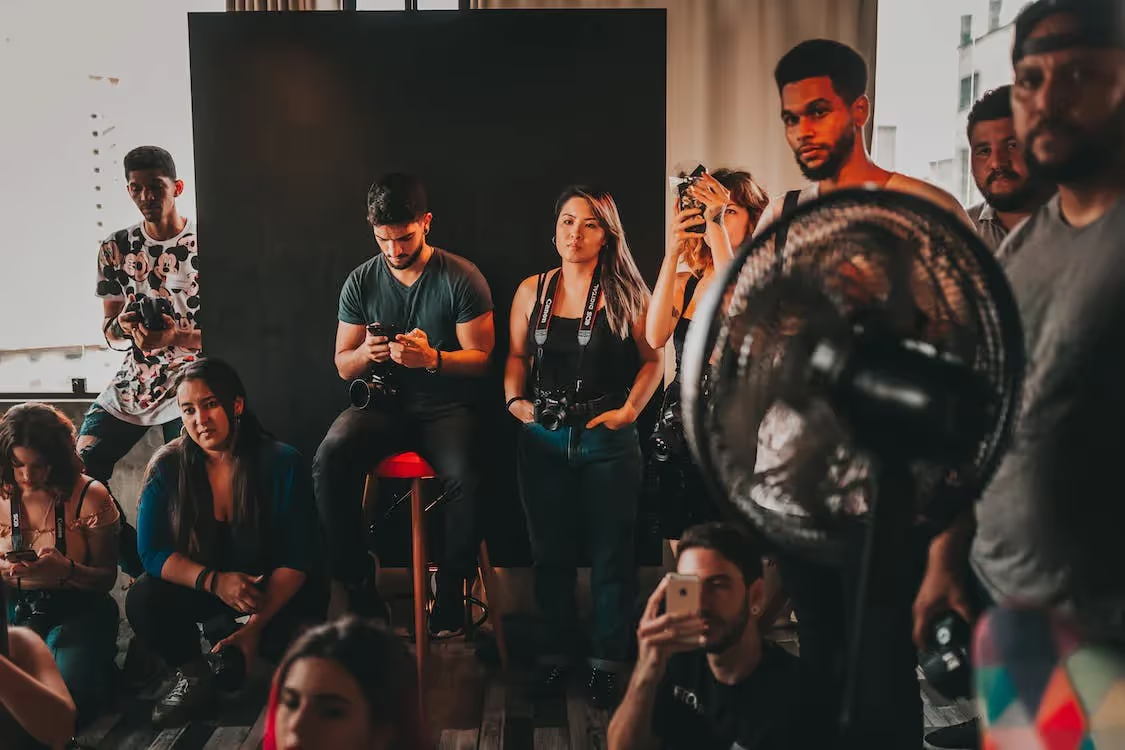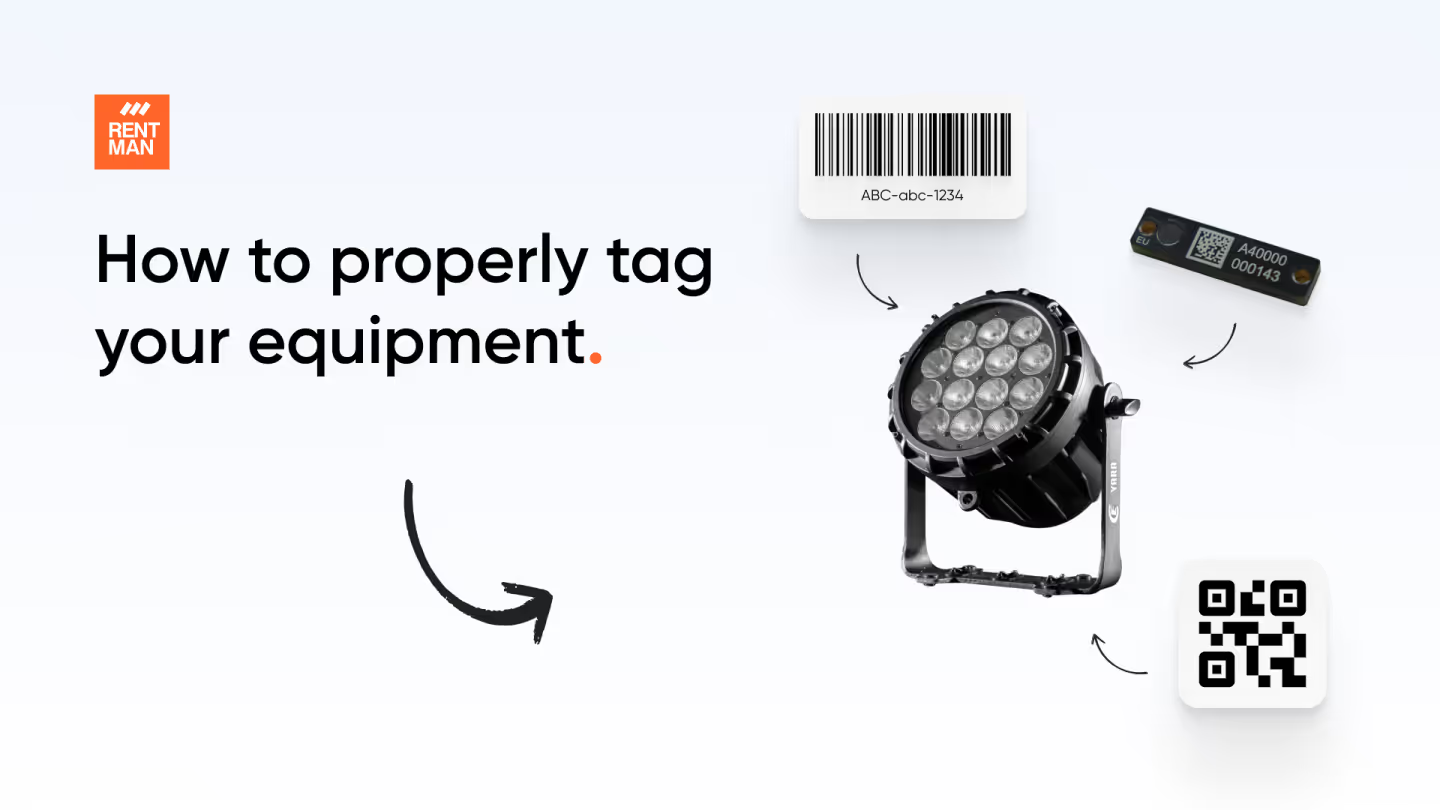Workforce planning for the event industry: what is it and how to do it?

Every event requires talent. Talent is a crucial aspect for your business. Making workforce planning a vital component in your company’s growth.
However, many companies don’t fully understand how to leverage workforce planning to plan their current and future workforce needs. Thus limiting your ability to reach key growth and revenue goals.
So let’s talk about how to align your business goals and your workforce to ensure you always have the talent you need at your disposal.
Here’s what we’ll go over:
1. What is workforce planning?
2. Key elements of workforce planning
3. The role of communication in workforce planning
4. Workforce planning tools
5. Who is responsible for workforce planning?
6. Example of workforce planning
What is workforce planning?
Workforce planning involves aligning your company’s priorities and needs with your employees. Effective events workforce planning ensures that your event projects run smoothly by aligning your crew’s skills and availability with your company’s goals.
Then use that information to anticipate your organization’s staffing needs over the next year or two. The goal is to ensure your company always has the right people on hand to keep your business running smoothly.
To do this, you need to look at your current team and take stock of who might leave or what skills you might need in the future. By doing this, you can prepare in advance and avoid problems when crew members suddenly leave or when your company grows.
And don’t confuse workforce planning with workforce management which focuses on ensuring you have the right people assigned to the right roles. Workforce management isn’t just about scheduling, it’s a broader concept that includes talent management, payroll, and time-keeping, among other elements.
What is strategic workforce planning?
Strategic workforce planning is a similar concept as outlined above, however, it looks further ahead. Instead of a one to two-year vision, strategic workforce planning looks like three to five years in the future.
Building a strategic workforce planning capability allows companies to anticipate future workforce needs and prepare for sustained company growth, while workforce planning is more about managing present and near-future resources efficiently.
Benefits of workforce planning
In today’s talent-based economy, the key element that keeps event companies running is people. And if you’ve ever experienced staff shortages, you know that not having the right talent in place can cause enormous strain on a business.
That’s why workforce planning is important. If your organization can look ahead and plan what roles, skills, and people will be needed to meet its business goals now, and in the future, you are more likely to thrive.
When done correctly, the benefits of workforce planning include:
- Helping you further your business goals,
- Improve your retention rates,
- Discovering staffing gaps and opportunities, including succession planning to prepare for key role transitions,
- A deeper understanding of your current industry’s needs and demand,
- A clear recruitment plan and goals for the near future.
What are the key elements of workforce planning for the event industry?
Workforce planning supports the growth of your company. So, since your workforce plays a central role in your company’s future, here are six steps to create a workforce planning strategy for the events industry.

- Strategic direction: Have a clear company vision and define the direction and long-term objectives for your event company. Then ask yourself what crew and freelancers will you need at your disposal to reach those goals.
- Workforce analysis: Analyze your current team. What positions and skills do you have on hand? How big is your network of freelancers? Make a list that outlines the current workforce resources you have on hand.
- Supply analysis: What’s the status of the market? Are there any external factors, upcoming trends, and market shifts that will impact your business or recruitment efforts?
- Demand analysis: Armed with this information, jot down the crew and skills your company will need to grow and reach your objectives. Also, note how many people you will want to hire in-house vs on a freelancer basis.
- Gap analysis: Look at your notes and identify the skills gaps and workforce shortages between what you currently have and what you will need in the near and distant future.
- Solution implementation: Brainstorm how you will bridge that gap. From offering additional benefits to retain your top talent to working with recruitment agencies to fill gaps, plan out a long-term strategy to attract the talent you need to succeed.
The role of communication in workforce planning
As you plan for your workforce, it's not just about hiring the right people or predicting future needs — effective communication is essential to ensuring that your team is aligned, informed, and working toward the same goals. In the events industry, where timelines can shift, requirements change, and roles evolve, your workforce planning should also consider how you will communicate with both in-house and freelance teams.
How to ensure effective communication in workforce planning:
- Clear expectations for roles and responsibilities: As part of your workforce planning, make sure that everyone on your team understands their role and what’s expected of them for each event. Rentman’s Crew Planner can help you assign and track responsibilities clearly, ensuring that everyone knows their tasks from day one.
- Real-time updates and adaptability: In the fast-paced world of events, things can change in an instant. Having a system that allows for real-time updates and instant communication helps mitigate confusion.
- Centralized communication tools: For workforce planning to be effective, it’s important that all communication is stored in one place for easy access and review. This helps prevent miscommunication and ensures that everyone is in the loop.
- Coordination between freelancers and full-time employees: With a mix of freelancers and full-time employees, communication can get complicated. Having a system in place to communicate with both groups simultaneously is important.
- Building strong communication channels for growth: As part of your workforce planning strategy, consider how communication can evolve as your company grows. For example, if you expand into new regions or countries, using communication tools that bridge language barriers and different time zones will be essential.
Workforce planning tools
If doing all of the above seems daunting, workforce management tools and workforce analytics software can help reduce uncertainty in the process by providing data-driven insights. They bridge your current workforce situation and where you want it to be in the future.
However, it depends on your company's size. Workforce management tools are particularly beneficial for companies with a large workforce, complex scheduling requirements, and compliance challenges.
Therefore, don’t feel obligated to implement new software if you’re simply looking to hire a handful of people over the coming year.
Who is responsible for workforce planning?
If you’re a larger organization, your HR department is typically responsible for workforce planning.
However, if you’re a smaller company and you work in the event industry, you won’t have many in-house employees. So senior management such as the CEO or the Project Manager or Crew Planner will typically put together such a plan.
What is an example of workforce planning?
Let’s say you’re an event company based in the Netherlands and planning to expand to the US. Currently, all of your crew members speak Dutch and are based locally. Use workforce planning to find out:
- The number of in-house crew members and freelancers you would need in the US.
- The various skills and knowledge you need your team members to have to successfully plan and execute local events.
- Any language requirements (for example, do they need to speak Dutch too to make communication easier).
- The desired location of your crew members.
- The budget and resources you currently have to meet these desires.
A workforce plan will include a brief analysis of your current situation, highlighting your long-term goals, your future workforce needs (number of people, skills, contract type, salary), external challenges, and a plan of action that outlines how you will bridge that gap.
For instance, if you want specialized full-timers, what benefits will you offer them to retain top talent? And will you work with a recruitment agency abroad to find local talent? Or will you use Rentman’s job board so you don't have to manually pick and invite crew members for each job?
Our job board and crew scheduling software make planning and communicating with your freelancers a breeze. No matter their location. Plan your crew with ease, knowing you'll always have the right people for the right job.
FAQ
Frequently asked questions
No items found.
Previous blog posts

How a serial number works and why you should use it
How a serial number works and why you should use it

How to set Asset Tags for your Equipment: A Comprehensive Guide for Rental Businesses
How to set Asset Tags for your Equipment: A Comprehensive Guide for Rental Businesses

